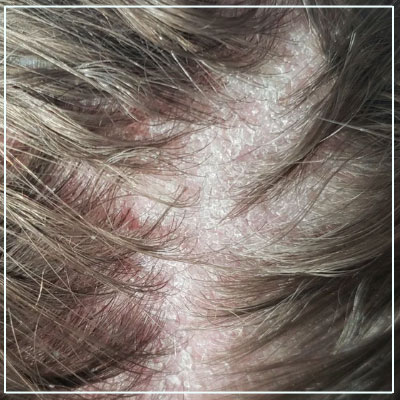Seborrheic dermatitis is typically diagnosed based on a combination of clinical examination, medical history, and, in some cases, additional tests. Here’s how the diagnosis is generally approached:
1-Medical History:
- The healthcare provider will begin by taking a detailed medical history. They may inquire about symptoms, such as itching, redness, and flaking of the skin, as well as any factors that may exacerbate or alleviate the symptoms.
2-Clinical Examination:
- A thorough examination of the affected areas, usually the scalp, face, chest, and back, will be conducted. The characteristic signs of seborrheic dermatitis include redness, flaky or greasy scales, and sometimes yellowish crusts.
3-Rule Out Other Conditions:
- Since seborrheic dermatitis symptoms can resemble those of other skin conditions such as psoriasis or eczema, the healthcare provider may need to rule out these conditions through the examination and, if necessary, additional tests.
4-Skin Biopsy (In Some Cases):
- In rare cases or when the diagnosis is uncertain, a skin biopsy may be performed. This involves taking a small sample of the affected skin for microscopic examination to confirm the diagnosis and rule out other skin disorders.
5-Wood’s Lamp Examination:
- In some instances, a Wood’s lamp (ultraviolet light) may be used to examine the affected skin. This can help highlight certain features of seborrheic dermatitis.
6-Response to Treatment:
- Another diagnostic aspect is the patient’s response to treatment. If symptoms improve with typical treatments for seborrheic dermatitis, this can further support the diagnosis.
It’s essential for individuals experiencing persistent or severe symptoms to seek professional medical advice for an accurate diagnosis and appropriate treatment. Dermatologists are specialized in diagnosing and treating various skin conditions, including seborrheic dermatitis.
For more information, consult Dr. Deepam Shah one of the Renowed Dermatologist in South Mumbai or you can contact us on 9324589084


